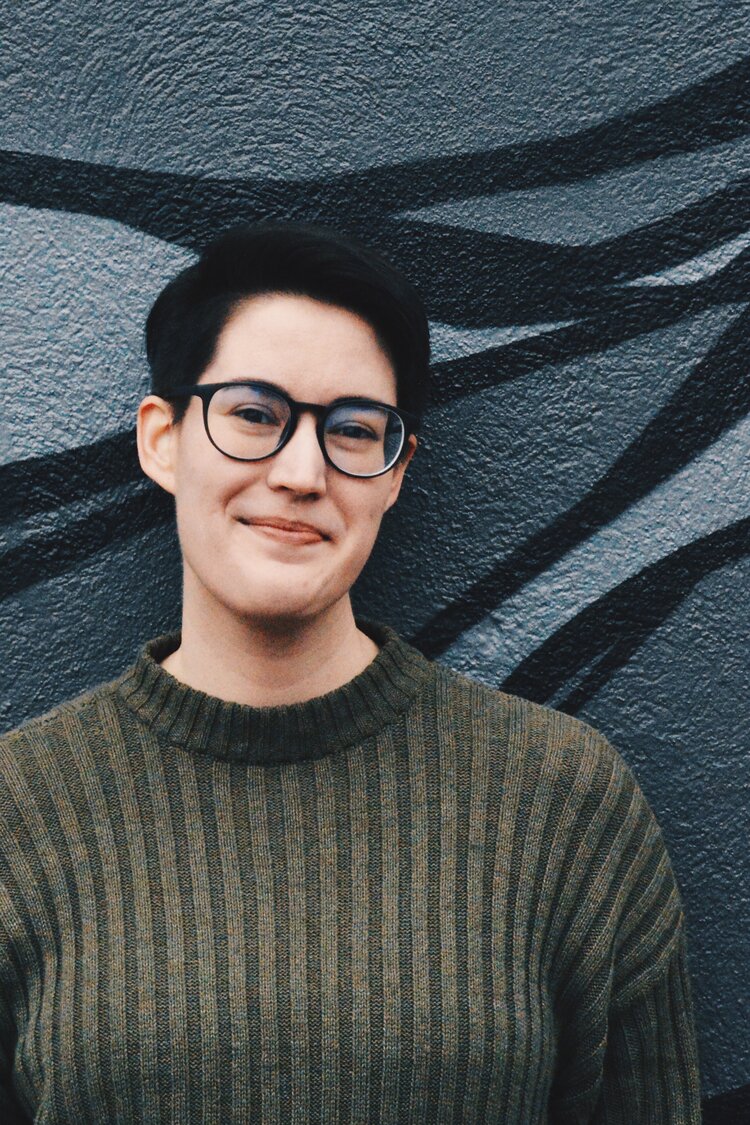Debut young adult novel Who I Was With Her is a portrait of grief, young love and figuring out who you are when everything is falling apart.
“A beautiful, heartbreaking, ultimately uplifting book about the pain of hiding who you are when your feelings become too huge to contain. A confident, sincere debut from a writer to watch,” said Tom Ryan, author of Keep This To Yourself.
When her girlfriend dies, closeted teen Corinne doesn’t know where to turn. The secret relationship that gave her so much light and joy is now a fire tearing her apart. Crisp, sparse language reflects the narrator’s anguish–and her inability to face it.
In her pain, Corinne tries to determine who she wants to be vs. who others expect her to be vs. who she is vs. who she was when her girlfriend was alive.
Author and Lambda Literary Fellow Nita Tyndall always wanted to be a writer. They finished a novel during their first attempt at NaNoWriMo–while still in high school. That experience got them to pursue a summer creative writing program at Duke University and landed them an agent. The novel didn’t sell, but it got Nita on the path to write what became Who I Was With Her.
Who I Was With Her almost joined Nita’s first book on the shelf of what might have been. “Too sad,” editors said. One publisher suggested rewriting it as a breakup book. Nita tried, but it “was like pulling teeth.” Two years later, Nita revised the manuscript (keeping true to its essence), got a new agent, and sold the book.
Being a debut author during a global pandemic can be a surreal experience. Nita watched event after event be canceled. Though a few virtual opportunities popped up, “it doesn’t feel like I have a book coming out yet. I only have more emails in my inbox,” said Nita.
In this age of Zoom conference meetings, we had a come-as-you-are phone call (comfy clothes welcome, showers not required, Nita in North Carolina, me in Alaska) to discuss writing sex scenes for young adults, the pressure to be the perfect child, and own voices in publishing.
What do you hope readers, especially young queer readers, will take away from this book?
It’s important to get that it’s okay to not come out in high school. It’s okay to figure out your journey. [Society] expects you to have all the answers, but you don’t have to have it all figured out at 17. It’s valid to figure it out later.
Did you feel pressure to be the perfect person in high school?
Yes, extremely. I’m an only child. I felt lots of pressure to be the perfect kid. Straight A’s. Not all the pressure came from my parents, but it was internalized. I got perfect grades and did all the things. I came out as queer as a senior in high school. That was not tied to being perfect. I felt academic pressure; it’s so hard when you’re 15 or 16.
Do you feel pressure to write a certain character?
Luckily for me, my editor got the story and never pressured Corinne to be anything other than bisexual.… We like to have own voices, but this book is not neatly packaged as own voices. I do feel that pressure, and we do need more trans books by trans people. I would like to contribute and be part of that cannon. I wrote this book when I identified as cis. I was a cis, queer girl in high school, and that story is still very much a part of me. It is important to have prickly, unlikable girls. I want to write own voices, but subverting that also gives me freedom.
How do you balance pain and suffering with plot, momentum and light?
Grief is weird. The moments of happiness make the moments of pain sharper. I was conscious that it not be sad all the way through. Otherwise, it is not fun for me as a writer and not fun for the reader. The flashbacks (with Corinne and her girlfriend Maggie) are helpful to bring joy and have the balance.
Speaking of balance, I thought you handled the sex very well in this book–neither too exploited nor ignored to the point of feeling unreal.
I’m really proud that the sex is not too exploited or ignored. It was extremely intentional. I wanted her to be bi. I wanted f/f sex on the page. There is not enough of that in YA, especially when I wrote the book. But also, they are teenagers. I was very mindful of that balance and of how explicit it could be. I have a fan fiction background. A lot is explicit, smutty. I know what an erotic sex scene looks like so I know what to stay away from for this scene. This scene is specific for teenagers. It can’t go too far, but it is still important to have. When writing erotica, it is meant to be arousing. Goal of YA sex scene is not. It’s character development.




